14 Types of Track Lighting to Match Your Decor & Style
Author: Rick Worst | Editor: Omar Alonso
Review & Research: Jen Worst & Chris Miller
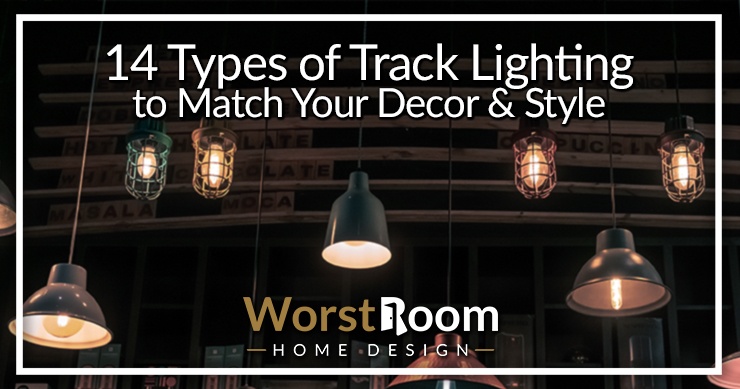
One of the most versatile styles of lighting out there, the various types of track lighting can really elevate the aesthetic allure of a room by leaps and bounds.
Also known as rail lighting, track lighting is capable of donning many hats—it can be used for general ambient lighting, for focused or accented lighting and for task lighting, too.
Given their versatility, track lights are available in many different shapes, sizes and forms, which can make the buying process quite a hassle!
What type of track do you use? What head type is the best? What about the shade and other features? Number of bulbs and overall features?
14 Types of Track Lighting
While we can’t make the decision entirely for you, we can help make life easier by taking you through the different types of track lighting that exist! Read on for a quick 101 on the different track lighting types.
Linear Track Lighting
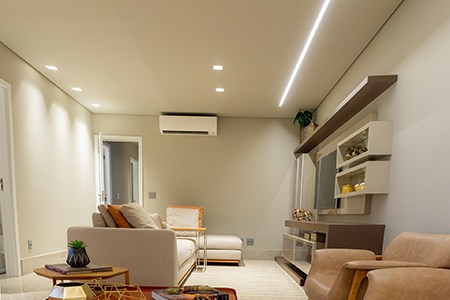
The most practical (and ergo, the most common) type of track lighting out there, linear track lighting, as the name suggests, is a straight length of track lighting.
These tracks, also known as standard tracks, generally 4 to 8 feet in length, are spacious enough to accommodate multiple lights on them—you can even extend the length if necessary.
This type of track lighting is also extremely popular as it’s the easiest type of track of lighting to install—they can be mounted directly on the ceiling. As far as all the types of ceiling lights go, these can be the most modern in terms of decor.
Sometimes, these types of light fixtures or lights can easily slide along the track, offering more customizability and versatility. Linear track lights are used in both residential and commercial settings, for both accent and task lighting.
Sometimes, with accessories such as T-connectors, you can even have a second track line divert from the main line—an extremely useful setup in galleries and art studios.
Flexible Track Lighting
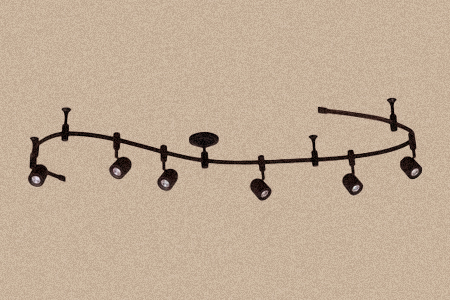
Flexible track lights are the bang opposite of linear track lights—these can be easily curved to any form that you desire, as well as cut into a length that you prefer.
Such tracks bring more flexibility to the heaps of awesome flexibility that already exists in track lighting.
Flexible track lighting, also known as monorail track lighting, hangs from a single ceiling mount, like swing arm and fixed track lighting. Generally, the lightbulbs can also slide along the track.
Therefore, track lights are a great idea if you’re looking for lighting that’s unique, versatile and customizable.
Swing Arm Track Lighting
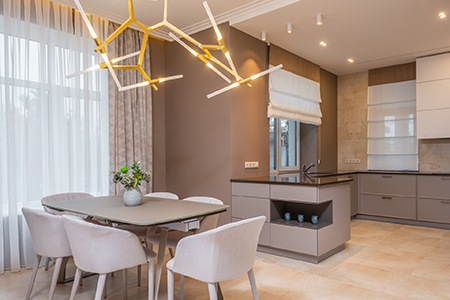
Swing arm track lighting, at its very core, is fixed track lighting arms that can swivel on joints. Swing arm tracks have one or more of such arms and while they can swivel on joints, they can’t be moved along the track.
However, the swinging arms offer a range of angling capabilities, as they come with a full range of motion. They can fill in the gaps of lighting where your various types of floor lamps may not be reaching in the room.
Step Head Track Lighting
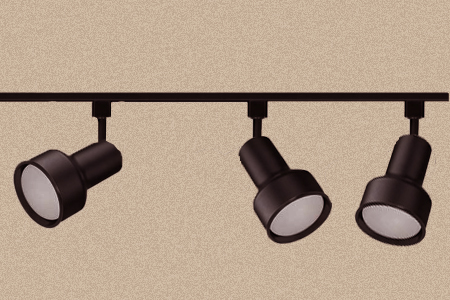
Another extremely common option of the types of track lighting, step heads are clearly distinguishable by their simple, clean designs. These heads work extremely well on both linear as well as flexible tracks.
Round Back Head Track Lighting
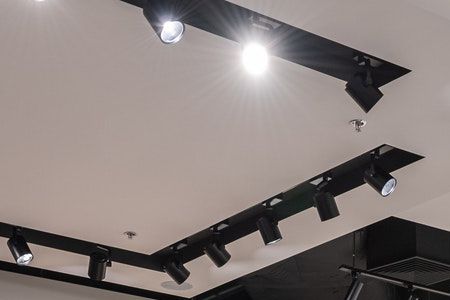
Round back heads look very similar to step heads, the only exception being their rounded backs. These are preferred by folks looking for a stylish, contemporary, sleek finish to their interiors.
Fixed Track Lighting
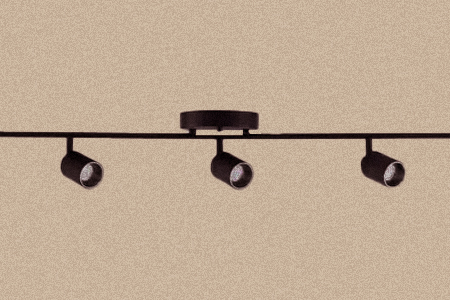
As the name suggests, lightbulbs on fixed track lighting cannot be moved, as they’re, well, fixed. However, they can be angled as desired to provide specific, focused lighting.
The track or bar can be curved or straight and hangs from a ceiling standoff. Combine them with your favorite types of lamps to completely light up your space.
Pinhole Head Track Lighting
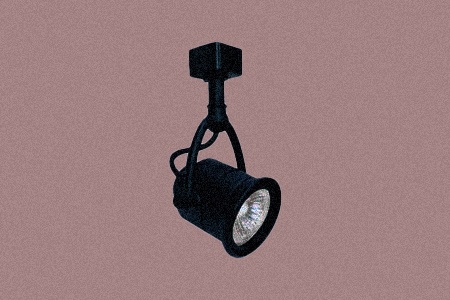
Pinhole heads also share the same basic form as round back heads and step heads, with the only difference being the partially exposed back.
This partial exposure isn’t an accident or for lack of sufficient material—it’s actually the head’s defining aesthetic selling point. They're used to aim the light at specific objects or areas without too much spill.
The exposed back makes the pinhole head track light a favorite among the “artsy” types, as it works extremely well in garages, art studios and spaces where a blend of functionality and effortless beauty are warranted (with more emphasis on the former, at all points).
Pendant Track Lighting
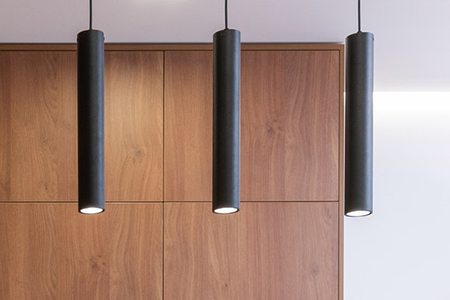
Pendant types of track lighting are all kinds of stylish, elegant and sophisticated! These lights can be hung from the ceiling with a cord to beautifully light up the space below.
Pendant lights are an excellent idea for those who want ambient or general lighting without compromising on beauty for functionality.
While pendants can’t be positioned as easily as other heads, their beauty makes up for it—most pendant-head bulbs come with a metal or glass shade that can effortlessly increase the aesthetic appeal of the room.
Their form makes them a favorite in kitchens—they especially look great when paired with kitchen tables or kitchen islands.
Gimbal Head Track Lighting
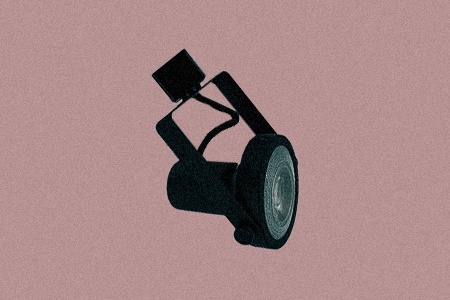
Gimbal track lighting head types are extremely common on movie sets, theaters, and auditoriums. These lights look like movie cameras, with heads that can rotate 360 degrees.
Similar to pinhole heads, these lights are the ‘go to’ for an industrial feel and vibe, making them extremely common features in workshops and studios.
Modern Track Lighting
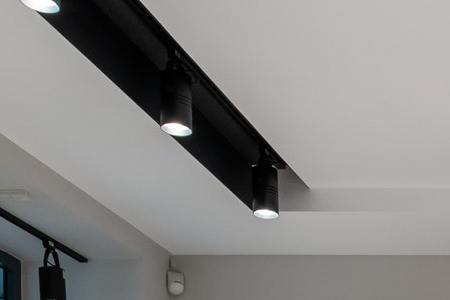
Rail lighting, while in itself a modern concept and design, is further ‘modernized’ by sleek finished, clean lines, geometric shapes, symmetry and no-nonsense colors.
The aim of modern track lighting isn’t to stand out—it’s to blend in with the background while providing excellent lighting. Combine this non-attention grabbing modern track lighting with the right types of light switches and you'll have plenty of light without obtrusive hardware everywhere.
Traditional Track Lighting
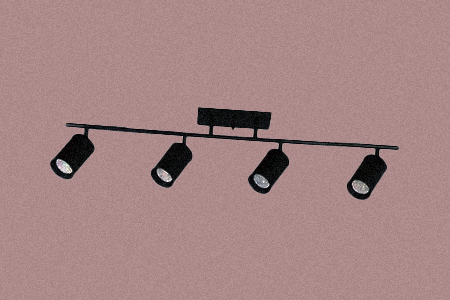
You can never go wrong with something classic, which is why traditional types of track lighting retains its appeal and timelessness.
The simplicity of the classic style of lighting leads to a very laid-back, straightforward, and charming finish. Therefore, such lighting is very popular in areas or events where a relaxed, welcoming atmosphere needs to be created.
Contemporary Track Lighting
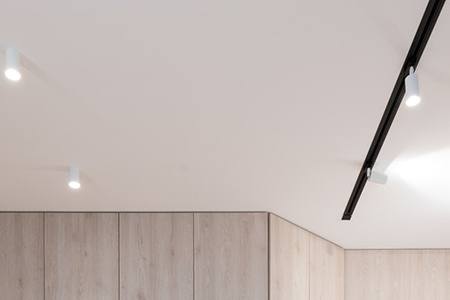
It may seem like ‘contemporary’ is just another word for ‘modern’, but the two couldn’t be more apart in style than they are! This conversation about the pros and cons of track lighting shows you just how positively they're viewed these days.
While some folks use the two words interchangeably due to the similarities that exist, contemporary lighting is significantly more relaxed and less fancy than modern lighting.
Where modern track lighting types emphasize clean, straight lines, contemporary track lights make use of round edges and fewer clean, straight lines. They've tended to use types of LED lights, although that's the trend in general these days.
However, contemporary lighting does look more futuristic than modern lighting, for which reason it can be the focal point or statement piece in a room, unlike modern track lighting.
Victorian Track Lighting
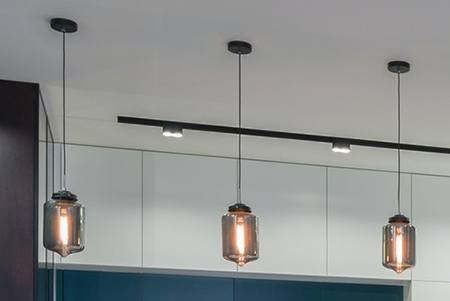
If you know anything about the Victorian times, you know that simplicity was not the trend of the day! Victorian track lighting is no different, with complex, detailed, elaborate design elements and lighting systems.
Victorian track lighting is ideal for those who want to add an ornate touch to the room. These are often engraved to add a more luxurious, fancy feel to the lights.
However, this beauty and fanciness come at a price and quite a steep one at that—these can cost you a few neat thousands!
Rustic Track Lighting
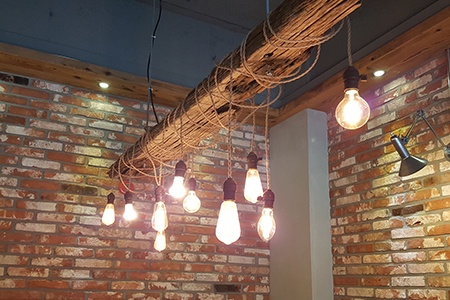
While similar to traditional lighting, rustic track lighting is all about natural, rugged beauty. Such lights are generally unobtrusive, with earthy colors and tones and light shades.
Rustic lighting can lend a grounded, refreshing look to any space, bringing in effortless beauty to the room.
Types of Track Lighting for Every Room & Ceiling
Given its constant form and distinguishable features, you may think that track lighting can give you only one kind of light or serve only one kind of purpose.
After all, it’s just a rod with lights on it, right? Well, surprise, surprise! Track lights are supremely versatile and even better, customizable for the most part.
Of course, choosing track lighting also involves picking out the type of shade, the number and types of light bulbs you want, what finish you want and somehow balancing your wants and your budget, but knowing the track lighting head types available will make the job easier and less harrowing.
Remember, another important thing to bear in mind is the installation. Some lights, like linear track lights, are easy to install, while some others, such as Victorian lights, need to be handled with care.
The latter is also more high maintenance and therefore, more expensive not just when you buy it, but during its life, too.
It’s also useful to know that there are three standard types of track lighting that are used—H, J and L tracks, or Halo, Juno and Lightolier track lights, named after their manufacturers.
A track light with 3 contacts is an H-type, whereas one with contact tips an inch apart is a J-type. Those with contacts 7-8 inches apart are L-types.
While these aren’t exactly types of track lights in the truest sense, it helps to know these so you can decide which one will suit your wiring and electricity setup.
That apart, if you’re looking to buy track lighting for your interior-decor needs, knowing the different styles mentioned above will make the shopping experience much easier and less stressful.
If you can’t remember the many points, lights, and types of track lighting discussed, just keep our guide handy and you’ll be golden.



